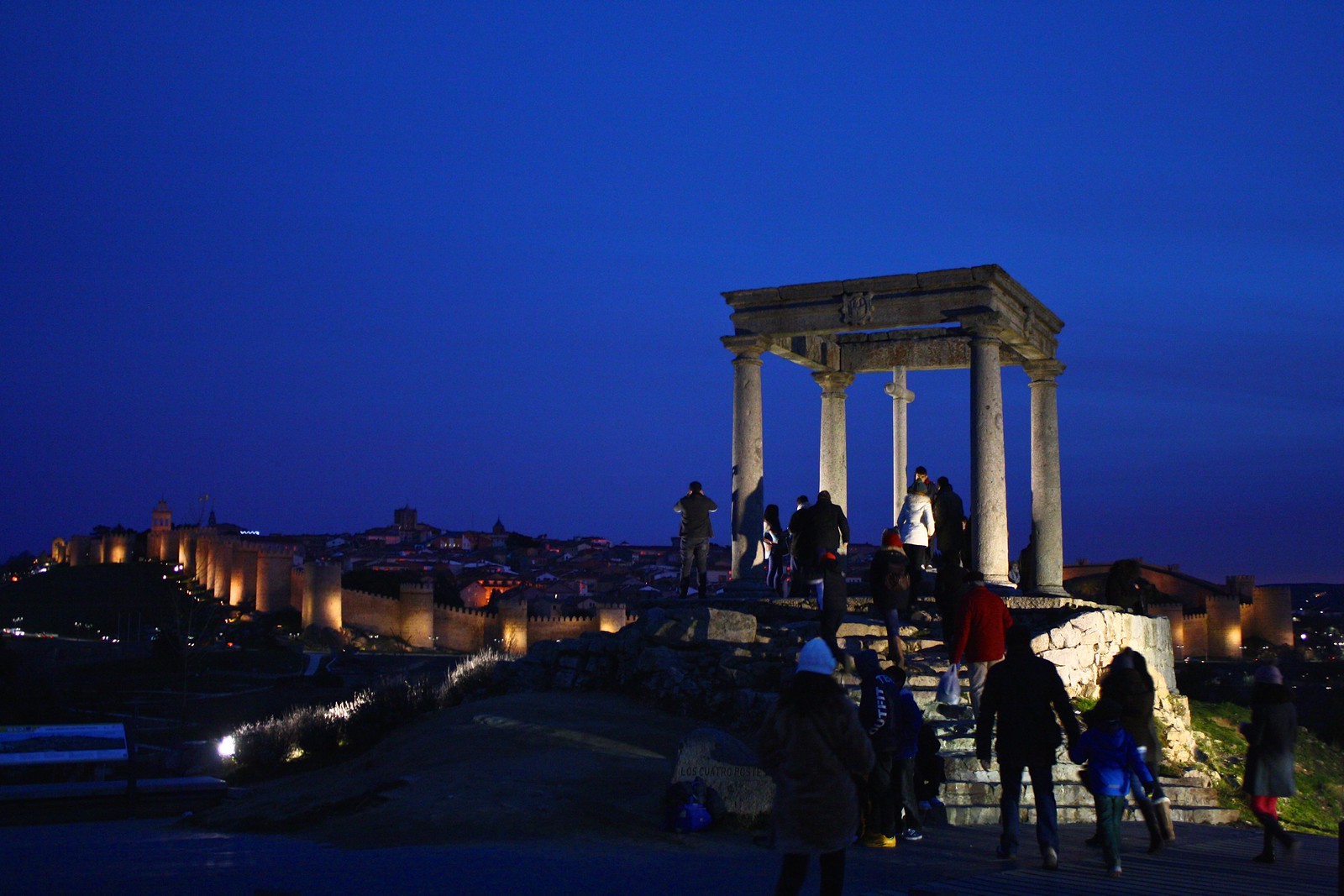You need a good five to seven days to fully explore the Spanish capital of
Madrid: its world-class art museums, neighborhoods, sprawling public parks, and historic
bars and restaurants. But you’d arguably need another week just to check out the World Heritage Sites that circle the capital, all no more than an hourlong train ride away. Monumental cities like
Segovia and
Toledo guard Madrid’s northern and southern borders, while El Escorial and Alcalá de Henares attest to the region’s royal and educational heritage. West of Madrid on the other side of the Guadarrama Mountains lies a city that is still completely surrounded by its original medieval walls:
Ávila.
Spain’s first Gothic cathedral
When I daytripped here on my way back home from
Salamanca, I was so short on time that I unfortunately wasn’t able to walk around on top of the
murallas, the old city walls. I did get to check out the cathedral, however. It was a really interesting church because it’s
the oldest Gothic cathedral in Spain—and you can really tell, as double rows of stained glass windows take up almost the entire second “story” inside. I was not expecting the interior to be so bright and clean as all the pictures on Wikipedia made it out to be rather ugly.
A really unique building material makes up much of the apse (the back-end) of the cathedral. Called
piedra sangrante or
“bleeding stone,” these stones are rich in dark red iron oxide that gives them a spotty or speckled look that is a fun surprise from the otherwise drab granite exterior.
St. Teresa’s cold, gray hometown
The honor of Ávila’s other main claim to fame falls on local daughter
St. Teresa de Ávila (1515-1582), a nun who would go on to reform the Carmelite Order and become an important mystic writer during the Counter-Reformation. Catholic faithful can stop by various convents where St. Teresa was born, where she grew up, and where she spent most of her life, as well as a small room with countless relics and a museum that scores high on old books and paintings but offers almost no explanation of her life and works. I wasn’t all that into the Teresa-mania in Ávila, but on the other hand I also wasn’t a Spanish Catholic visitor; St. Teresa very nearly became Spain’s patron saint in the 1600s!
The rest of the city left me shrugging my shoulders; Segovia had nicer Romanesque churches, Toledo had prettier streets, and Alcalá de Henares had more colorful traditional Castilian homes. Being so close to the rugged Guadarrama mountain range, most of Ávila was built in the local, cold granite stone, a shocking change from the warm sandstone of Salamanca.
The ultimate lookout point: Los Cuatro Postes
Just northwest of the old town, if you go down the hill, cross the river, and climb back up again you’ll end up at
Los Cuatro Postes (“the Four Posts”), an old
humilladero or wayside cross that was set up centuries ago and is teeming with legends.
For most people, Los Cuatro Postes offers the best location for getting “that” shot of Ávila that you see on the Internet and in guidebooks of the illuminated city walls rolling down the hillside, the warm golden stone contrasting with the Blue Hour sky. Make sure to get here just before sunset you can stake out a people-free photo before the crowds arrive.
Have you been to Ávila before? Were you “meh” or “wow!” about the city?












